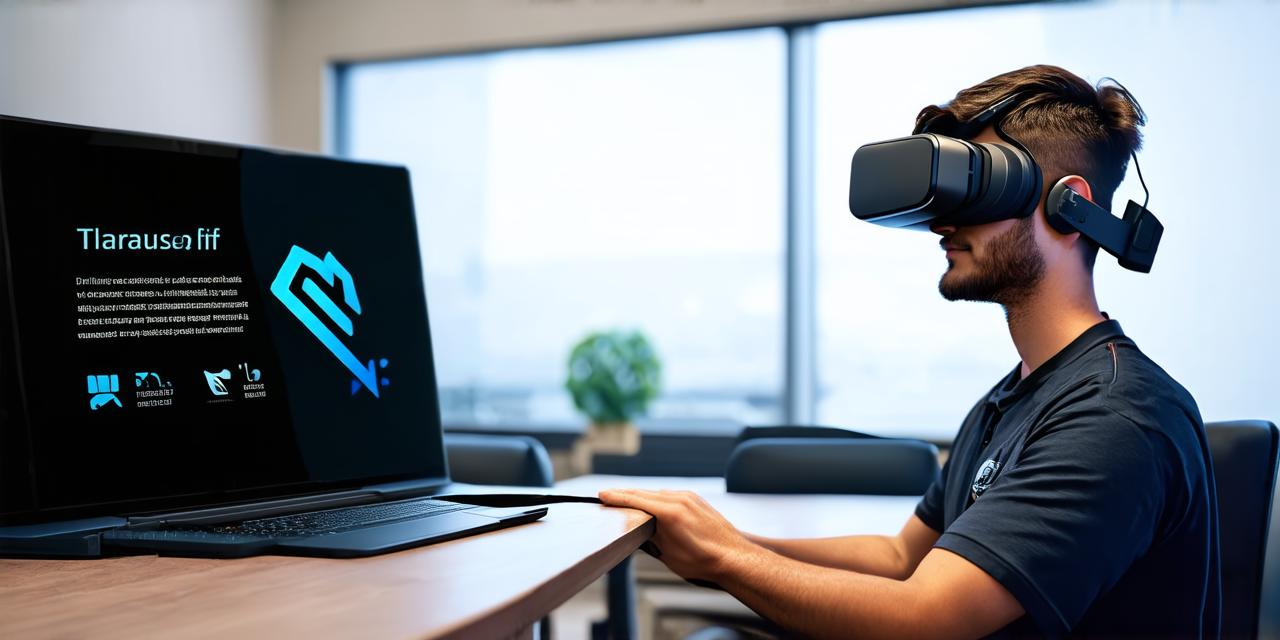Virtual Reality (VR) and Education
Virtual reality (VR) is rapidly changing the way we learn and interact with our environment. It’s a technology that allows us to create immersive experiences that simulate real-world environments or scenarios. With VR, students can explore new concepts, practice skills, and develop their creativity in ways that traditional classroom settings cannot provide.
1. Enhancing Learning Outcomes
One of the most significant advantages of VR in education is its ability to enhance learning outcomes. Studies have shown that students who use VR-based learning tools are more engaged, retain information better, and achieve higher grades than those who use traditional teaching methods.
For instance, a study by the University of Maryland found that students who used VR simulations to learn about ancient Egypt achieved an 87% retention rate compared to the 50% retention rate of students who used traditional classroom methods.
2. Personalizing Learning
Another advantage of VR in education is its ability to personalize learning experiences. With VR, students can learn at their own pace and in a way that suits their individual needs and learning styles.

This personalization leads to better engagement and motivation, which ultimately leads to better learning outcomes.
3. Simulating Real-World Scenarios
Virtual reality technology provides an excellent opportunity for students to experience real-world scenarios in a safe and controlled environment. For instance, medical students can use VR simulations to practice surgical procedures, while engineering students can simulate complex systems and test different designs without the need for expensive physical prototypes.
By experiencing these scenarios in a virtual world, students develop critical thinking and problem-solving skills that are essential for success in their chosen fields.
4. Creating Immersive Experiences
Virtual reality technology can create immersive experiences that engage students’ senses and stimulate their imagination. For example, history students can virtually walk through ancient civilizations, experiencing the sights and sounds of daily life.
This level of immersion helps students develop a deeper understanding of historical events and makes learning more enjoyable and memorable.
5. Promoting Collaboration and Communication
Virtual reality technology can facilitate collaboration and communication between students, teachers, and other professionals in the field. For example, a virtual reality-based platform for architecture students can allow them to collaborate on designs and share their work with clients and stakeholders from around the world.
This level of interaction and exchange of ideas promotes critical thinking and creativity and helps students develop essential communication skills that are crucial for success in the workforce.
6. Overcoming Learning Barriers
Virtual reality technology can help overcome learning barriers for students who have difficulty with traditional classroom settings. For instance, students with ADHD or anxiety disorders may find it challenging to focus and engage in a traditional classroom setting.
However, virtual reality technology provides an alternative learning environment that can help these students develop the skills they need to succeed. By providing a personalized and engaging learning experience, VR can help students overcome learning barriers and achieve their full potential.
7. Cost-Effective
Virtual reality technology can be a cost-effective solution for educational institutions looking to provide high-quality learning experiences. By using VR simulations instead of expensive physical prototypes or field trips, schools can save money while still providing students with valuable learning experiences.
Additionally, virtual reality technology can be used to supplement traditional classroom settings, allowing schools to offer more comprehensive and engaging learning experiences without breaking the bank.
FAQs:
Q: Is VR technology expensive?
A: While VR technology can be expensive initially, it can also be cost-effective in the long run, especially when compared to physical prototypes or field trips.
Q: Can VR technology replace traditional classroom settings?
A: VR technology cannot replace traditional classroom settings entirely, but it can supplement them and provide students with more engaging and comprehensive learning experiences.
Q: Is VR technology suitable for all types of learners?
A: Yes, VR technology is suitable for all types of learners, including those with learning barriers or disabilities.
